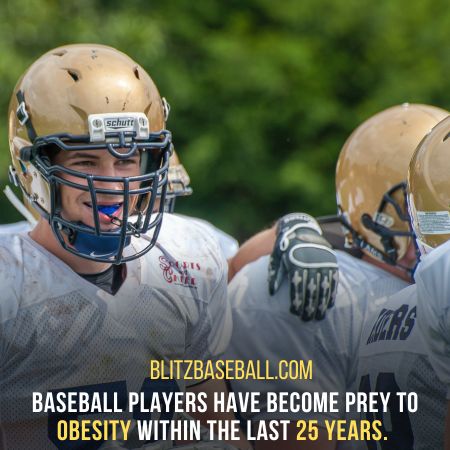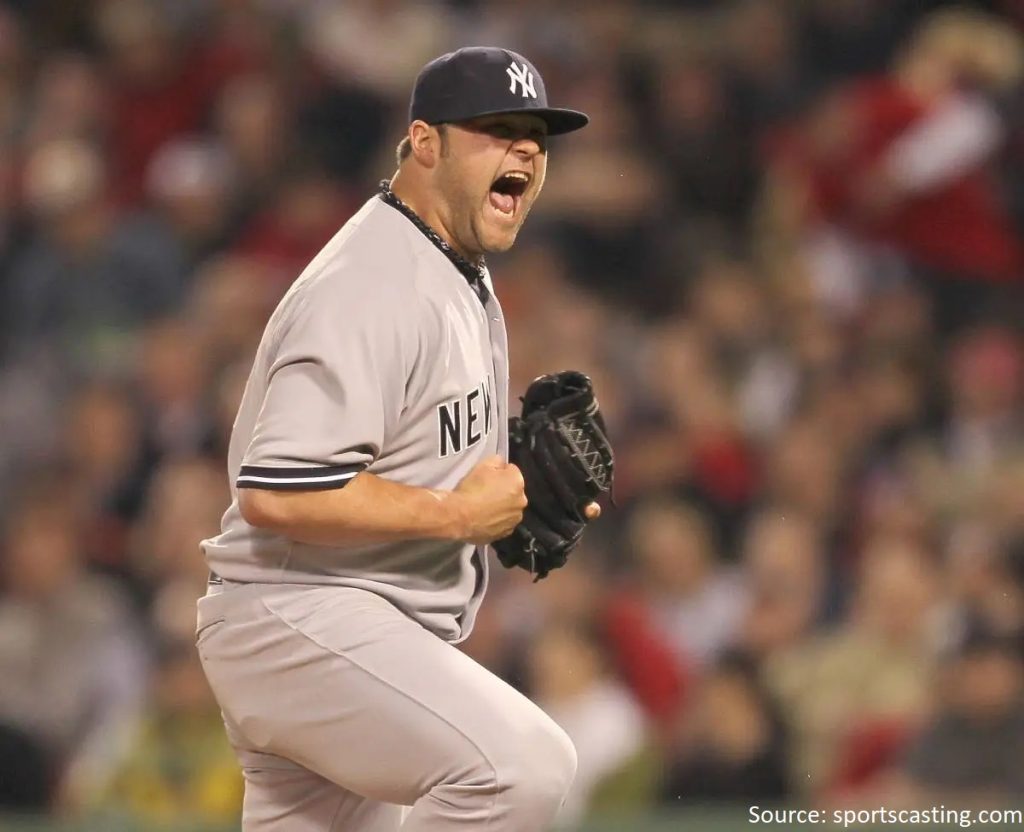Baseball, often referred to as America’s favorite recreation, has long been associated with images of athletes swinging bats and jogging around the diamond. However, most baseball players are generally overweight or even downright fat. But, why are baseball players fat?
In this article, we delve into the reasons behind this typical perception of why are baseball players fat.
By exploring the unique physical demands of baseball, the significance of body composition, and the evolving strategies utilized by players and teams, we aim to shed light on the truth behind the physique of these exceptional athletes.
Key Takeaways:
- Baseball players have become prey to obesity within the last 25 years according to the study by Penn State University.
- Baseball is often misunderstood as a low-intensity game due to its slower pace and intermittent bursts of action.
- This reduction in physical activity, combined with the necessary rest and recovery period, can lead to weight gain.
- Steroids and PEDs can lead to notable physical changes, including increased muscle mass and weight gain.
What Percentage of Baseball Players in Obese?
Penn State University carried out a study to analyze 145 years of data. The study revealed that the weight of the MLB players fell within a normal body mass index (BMI). However, the BMI of the players started to rise above 25 after 1991. Baseball players have become prey to obesity within the last 25 years.
The study highlights the potential risk factors associated with a high body mass index. It doesn’t only display health risks to baseball players but also to those who are baseball fans and see them are role models. It is crucial for the MLB to take the necessary steps to promote healthy lifestyles for the better future of its players.

Why Are Baseball Players Fat? 5 Major Reasons
There exists a prevailing belief that baseball players are obese and, consequently, unsuitable for athletic performance. However, it is crucial to reevaluate this assumption and examine the realities of health and fitness within the sport.
By delving into the intricate dynamics of baseball, and considering factors such as body composition, training regimens, and performance indicators, we aim to challenge the notion that baseball players are inherently unhealthy.
Through this exploration, we will uncover a more nuanced understanding of the relationship between physique, athleticism, and success in baseball.
1. Changes in Diet and Nutrition
One major factor contributing to the perception of why are baseball players fat is their diet and nutrition. The dietary requirements of a baseball player differ significantly from those of an average person.
The demands of the sport necessitate a high intake of calories, as players engage in rigorous physical activity during practices, games, and training sessions.
Traditionally, baseball players consumed diets that were high in carbohydrates, such as fast food, processed snacks, and sugary beverages. These choices provided quick bursts of energy but often lacked essential nutrients.
Over the past few years, this diet has become increasingly heavy and unhealthy, with a reliance on processed and convenience foods. This shift has contributed to the rise in obesity among baseball players.
Moreover, the sedentary lifestyle that accompanies long periods of travel and downtime during the baseball season compounds the effects of a poor diet.
Combined with irregular eating schedules and the temptations of stadium food, players are susceptible to weight gain and a decline in overall health.
However, in recent years, there has been a growing awareness of the importance of nutrition and its impact on performance.
It is vital to encourage baseball players to shift toward healthier diet plans. Otherwise, the consequences will negatively influence their game and the future of MLB.
2. Baseball Exertion Levels as Compared to Other Sports
The second reason behind the perception of “fat” baseball players lies in understanding the unique exertion levels of the sport in comparison to other sports.
Baseball is often misunderstood as a low-intensity game due to its slower pace and intermittent bursts of action.
However, this perception fails to recognize the specific demands placed on baseball players and the physical toll it takes on their bodies.
While baseball may not require constant running or extreme physical contact like some other sports, it requires explosive bursts of energy and agility.
Players need to sprint, slide, throw, and swing with precision and power. These actions engage multiple muscle groups, demanding strength, speed, and coordination.
The prolonged duration of a baseball season, spanning approximately six months, also adds to the challenges faced by players. Endurance becomes a crucial factor, as they need to maintain peak performance over a grueling schedule of games and practices.
Contrary to popular belief, baseball players undergo rigorous training regimens to develop the necessary skills and physical capabilities to excel in their sport.
Strength and conditioning programs, speed and agility training, and endurance exercises are all vital components of a baseball player’s preparation.
Here’s a fun fact: the best baseball players of all time were overweight including C.C. Sabathia. He weighed approximately 299 pounds.
Recognizing the unique exertion levels and physical demands of baseball sheds light on the misconception that players are unfit.
Their training and performance requirements demonstrate the athleticism and dedication necessary to compete at the highest level of the sport.

3. Recovery Processes May Lead to Gain Weight
The third reason contributing to the perception of “Why baseball players are fat” stems from the impact of injuries and the subsequent recovery process.
Baseball is a physically demanding sport that places significant stress on players’ bodies, increasing the risk of injuries.
When players sustain injuries, their ability to engage in regular physical activity is often compromised. They may be required to reduce or modify their training routines and refrain from participating in games.
This reduction in physical activity, combined with the necessary rest and recovery period, can lead to weight gain.
Additionally, the recovery process often involves limited mobility and restrictions on certain exercises or movements. As a result, players may experience muscle atrophy or a decrease in overall fitness.
This, coupled with potential changes in eating habits during the recovery phase, can contribute to weight gain and a decline in body composition.
Moreover, the psychological impact of injuries can also play a role. Players may experience frustration, anxiety, or depression during the recovery process, which can lead to emotional eating or other unhealthy coping mechanisms.
It is essential to note that weight gain during the recovery phase is not indicative of the player’s overall health or commitment to fitness.
Once players are cleared to resume their regular training and return to the field, they typically work diligently to regain their physical condition and lose any excess weight gained during the injury and recovery period.
4. Hardcore Training
The fourth reason behind the perception of “why baseball players are fat” is the nature of their hardcore training routines. Baseball players engage in strict and demanding workouts to enhance their performance on the field.
These practice plans often focus on building strength, power, speed, and agility, which may result in a physique that appears different from traditional notions of a lean athlete.
The focus on explosive movements, such as sprinting, throwing, and swinging, requires players to develop strong and muscular bodies.
This can lead to a higher muscle mass and a slightly heavier appearance, which can be mistaken as excess weight.
Furthermore, baseball players experience specialized strength and activity programs that include weightlifting, plyometrics, and drastic cardiovascular exercises.
These workouts are designed to enhance performance and develop the specific physical attributes necessary for success in the sport.
As a result, players may have a more significant overall body composition compared to athletes in sports that prioritize a lean physique.
It is essential to understand that the muscular build of baseball players does not necessarily correlate to being unhealthy or unfit.
Their training programs are tailored to the demands of the sport, aiming to optimize performance and prevent injuries. The focus is on practical strength and athleticism rather than conforming to traditional notions of a skinny body type.
5. Steriods and PED Drugs Abuse

Here is a dark truth about the prevalent issue of obesity in baseball players. The use of steroids and performance-enhancing drugs (PEDs) within the sport.
Over the past few decades, baseball has faced numerous scandals involving players using banned substances to enhance their performance.
Steroids and PEDs can lead to notable physical changes, including increased muscle mass and weight gain. This association between drug use and altered physique has contributed to the misunderstanding that all baseball players with larger builds are using such substances.
While strict drug-testing protocols and penalties have been implemented to battle doping in baseball, the degraded legacy of past steroid scandals continues to shape public perception.
It is important to mention that not all players engage in or have engaged in the use of banned substances, and it is unfair to generalize and label all players as “fat” due to this dark factor of baseball’s history.
Efforts have been made to fix integrity and maintain a level playing field in baseball, emphasizing clean competition and dedication to fair play.
The focus now lies on promoting a healthy, drug-free environment to ensure that the sport’s athletes can showcase their skills and abilities without the shadow of PEDs impacting their physique or performance.
Frequently Asked Questions (FAQs)
Who Was the Fattest Baseball Player?
Walter Young, a former first baseman and designated hitter for the Baltimore Orioles in 2005, holds the honor of being one of the largest players in MLB history.
Standing at an impressive height of 6’5″ (1.96m), Young weighed an astounding 322 pounds (146kg). This unique physique resulted in a calculated BMI (Body Mass Index) of 38.2, which clearly exceeds the point for obesity.
What is the normal, overweight and obese BMI?
Here is a chart to illustrate all the ranges of BMI according to height:
| Height | Normal Weight (19-24 BMI) | Overweight (25-29 BMI) | Obese (30-35 BMI) |
| 150cm | 43-54kg | 56-65kg | +67kg |
| 160cm | 49-61kg | 64-74kg | +77kg |
| 170cm | 55-69kg | 72-84kg | +87kg |
| 180cm | 62-78kg | 81-94kg | +98kg |
| 190cm | 69-87kg | 91-105kg | +109kg |
Why Do Baseball Players Have Big Thighs?
Baseball players often have big thighs due to the explosive movements and power generated by their lower bodies. The repeated actions of running, squatting, and lunging contribute to the development of strong and muscular thigh muscles, aiding in their performance on the field.
To Wrap it All
In conclusion, the perception of “fat” baseball players is a complicated issue that demands a subtle understanding of the sport’s unique dynamics.
Factors such as dietary considerations, exertion levels, injuries and recovery, hardcore training, and the documented use of PEDs all contribute to the misconceptions surrounding baseball players’ physiques.
It is crucial to challenge these stereotypes and realize the athleticism, dedication, and specific physical conditions that define these exceptional athletes.
By shedding light on these factors, we can gain a more accurate understanding of baseball players’ bodies and appreciate the diverse range of figures within the sport.
